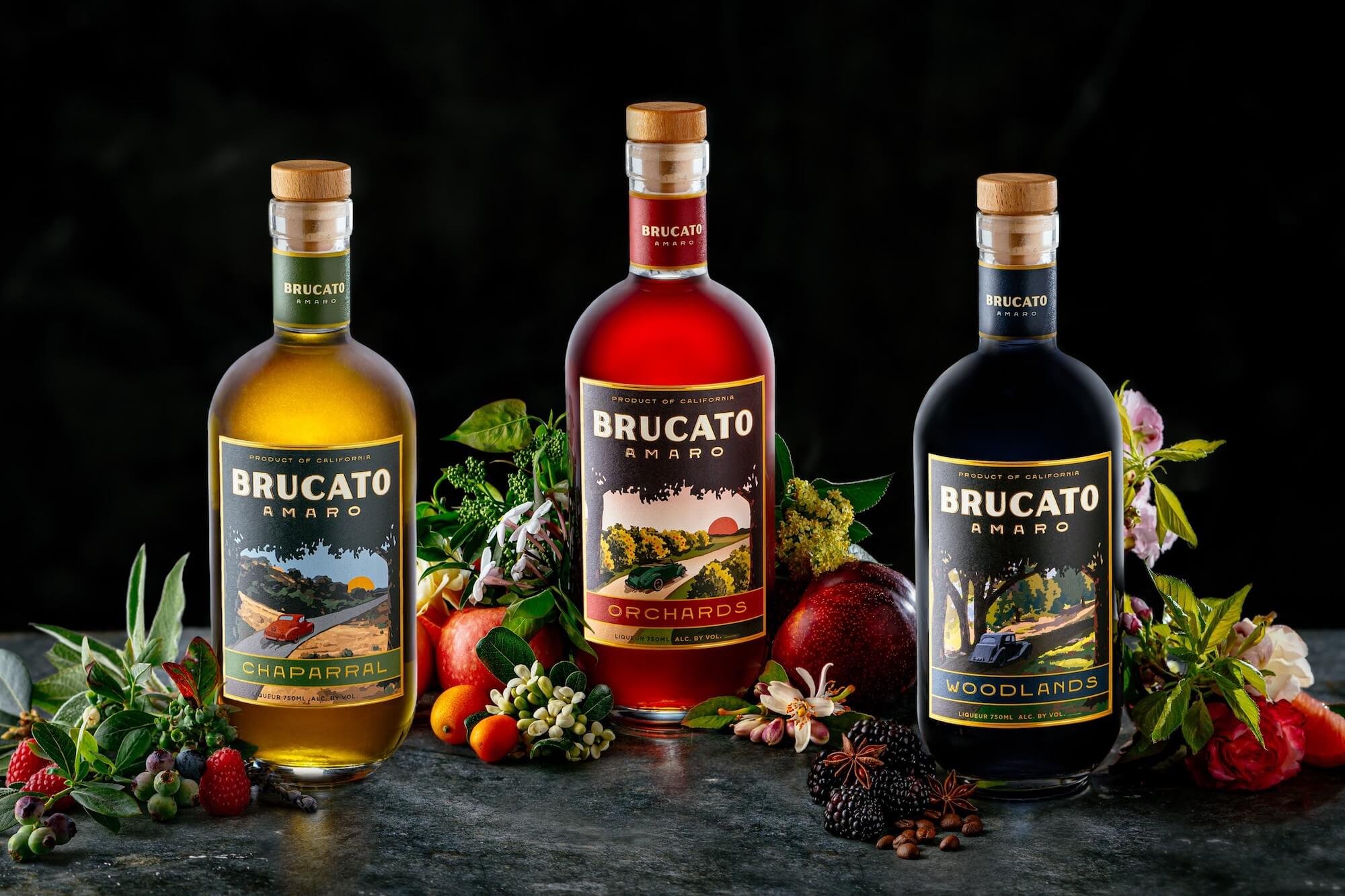Can Brucato Amaro Capture California's Diverse Terroir in a Bottle?
Brucato Amaro Bottling by Camper English
The production facility for Brucato Amaro is not found deep in California’s redwood forest, nor in its orchards or on its coastal shores. It’s located in a single loft room behind a café in San Francisco’s South of Market neighborhood, and if there is any local aroma wafting in through the doorway, it would be of the artichoke sandwich on special next door. On the day of my visit though, husband-and-wife team James and Sierra Clark are trying to capture the flavor of coastal California in a bottle.
They’re bottling and packing into cases Chaparral, one of three Amari (the plural of amaro, a term for bitter liqueurs) in the Brucato line. Chaparral is the herbaceous one of the three, meant to invoke the coastal hillsides of California with fresh bay leaf, mint, and tea mimicking the aromatic plants like sagebrush, manzanita, and scrub oak. It’s also bottled at a relatively high 46.4 percent ABV in the vein of Chartreuse herbal liqueur, and they recommend it as a substitute for that product in classic recipes like the Last Word with gin, Chaparral, maraschino liqueur, and lime.
Orchards, which is the Brucato amaro along the lines of Campari or Aperol, is the fruity one inspired by the orchards and citrus of Central Valley, producer of so much of America’s produce. Its flavor is driven by apricots and notes of orange, walnut, and cinnamon, plus subtle gentian that drives the bitterness of its Italian inspirations. The third of the line, Woodlands, is meant to evoke redwood, oak, and wet earthy notes of the forest with berries and cacao. It can also be substituted for classic amari like Nonino or Averna in cocktails like the Black Manhattan. Both these latter amari are bottled at around 23 percent ABV.
It’s no accident that the three products have very specific signifiers: herbal-coastal-Chartreuse, fruit-orchard-Campari, woodsy-forest-Averna. The Clarks tell me they spent time during development considering the marketing: How many products to launch with, and whether to choose more specific places (such as Big Sur, where they have a property) to represent what was in the bottle, or to lead with an ingredient such as calling the Orchards an “apricot amaro.” But they felt that Big Sur, for example, was too specific and would be unfamiliar to people who haven’t been there. So, “Orchards” it was.
Sierra and James Clark photo by Eric Wolfinger
That was one of many seemingly well-considered decisions. Sierra Clark said, “We felt there was a market opportunity, and we had a passion for it. We loved the idea of amaro but not necessarily the taste of many of the other American ones [we’re tried].” So they sought to do something different than the classic Italian amari and French herbal liqueurs on the market, and also something different from other American ones.
They used California as their inspiration. Rather than closely replicate Campari like they felt some of the other brands on the market have attempted, Sierra said, “We wanted to bring the taste of a place rather than trying to create the Old World experience.” Their version is an aperitif bitters like its inspiration, but lead by the flavors of apricots and walnuts. It’s quite different, but you can imagine it working similarly in drinks.
Another inspiring botanical was the West Coast shrub yerba santa. Sierra noted that it had once been used medicinally, then at some point came to be more of a flavor element to other medicines. It became an important grounding component of the Chaparral.
Brucato Amaro infusing photo credit Camper English
The process of making the amari in the line sounds easy in theory: the botanicals are infused in high proof, unaged California grape brandy in a specific order so that ingredients that take longer to infuse (apricots, roots, seeds) go in earlier, then fresher ingredients later, so that everything can be removed at the same time at the end. Then the mixture rests in stainless steel vessels with oak spirals to mimic barrel aging for several months, though they don’t taste terribly woody. They’re then diluted, filtered, sweetened, and bottled as I witnessed first-hand on my visit.
Though the production seems straightforward, the recipes and process were only dialed in after experimenting with over 200 infusions over the course of more than a year of trial and error. The Clarks tasted and combined the botanical infusions to develop their formulations, balancing the use of imported versus local botanicals and being sure to avoid any that could lead to over-foraging.
The other challenge the team is currently facing is squeezing everything into the little room behind the café. Sierra says that they need a space “about six times as big” as the current one, but they’re a small brand just in California with some product in Washington for now. As I’m leaving, they’re debating whether to bottle the next portion of Chaparral today or not, given that they can only fit so many more boxes in the room. I wish them luck, and free up some space on my exit.




